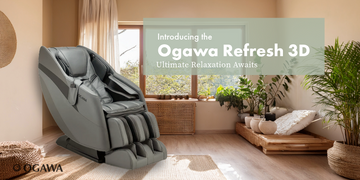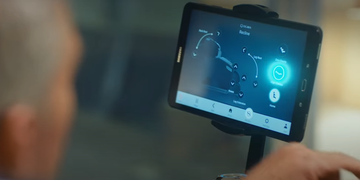Most of us are no strangers to leg soreness. It can get increasingly inconvenient and may even hinder your performance at work or at home. Taking immediate remedial action is often the first step toward getting rid of this pain.
But what exactly triggers soreness in the legs? Do your legs often get sore after an intense workout? Could there be other factors, such as fatigue and dehydration, that contribute to it? Are you wondering how to get soreness out of legs and prevent it in the future?
What Causes Leg Soreness?
There are a number of factors that can cause leg soreness out of the blue, like:
- Muscle cramps
- Dehydration
- Muscle fatigue
- Using improper techniques when working out
- A lack of proper stretching to warm up muscles
The most common cause of temporary leg pain is a muscle cramp, which can be experienced when working out. When this happens, a sudden pain shoots up across your leg, and you tend to feel a sharp pain every time your leg muscles contract.
Dehydration and muscle fatigue are two other common factors that contribute to leg soreness. You may have walked longer than your legs are accustomed to, or perhaps you failed to meet your hydration criteria for the day. Regardless of the reason, it is typically easy to heal from temporary soreness as long as you take the right steps.
Keep in mind, however, when the pain gets too recurrent or severe, it’s your cue to see a doctor. Since leg soreness can be common in athletes and workout enthusiasts, it can be beneficial to seek guidance from a healthcare professional to avoid muscle strain or pulled muscles.
Leg Soreness After Workout Sessions
Whether you’re just kickstarting your workout journey or taking your leg workout to another level, one thing is for certain: Your legs will sing the songs of pain. Every time you infuse your workout with a new or not-so-frequent exercise, you’re signing up for some extra soreness.
But is that a bad thing? Of course, not!
Your muscles constantly experience cycles of damage and healing as you progress in your workout regimen. Working out consistently boosts your athletic performance and makes you stronger.
Leg soreness after workout sessions can also be caused due to other reasons like overstraining yourself at the gym, not maintaining the right posture or technique, a lack of stretching before/after, and not following the right diet and hydration guidelines.
Now that we know some of the common causes, let’s dive into how to get rid of leg soreness and find relief.
How to Get Rid of Leg Soreness
There are several healthy approaches to try when learning how to get soreness out of legs.
Whether your leg soreness stems from fatigue, overuse, dehydration, cramping, or a minor injury, you can alleviate it with some surprisingly simple remedies.
For starters, you can rest your legs as much as possible and keep them elevated using pillows. You can even wear compression socks to apply constant pressure on your lower legs. That said, here are some quick treatments to get rid of leg soreness:
Cold Therapy
Apply an ice bag to the pain site on your leg about four times a day. Leave the pack for at least 15 minutes at a time. During the first few days, when the soreness is at its peak, try applying cold therapy more frequently.
A Warm Bath (and a Quick Stretch) Can Work Wonders!
One secret on how to get rid of soreness in legs is by taking a warm bath. A warm bath not only alleviates your pain but also relaxes your body. You can even use heat therapy in conjunction with cold therapy if you feel the combination of both temperatures works well for you.
Once shower time is complete, try doing some basic stretches. For instance, if the lower part of your leg is sore, point and straighten your toes while sitting. If the soreness is in the upper part of your leg, try touching your toes by bending over.
Remember to hold each stretch for about five to 10 seconds. If you feel the intensity of pain increase, make sure you stop stretching.
Why Massage Therapy Is a Powerful Way to Heal Leg Soreness
Sure, stretching and cold therapy play a role in relieving leg soreness. However, you need something more powerful to take your recovery up a notch and speed up the healing process.
This is where massage therapy comes in. This magic healing method has been around for over 5,000 years! Now, using massage therapy doesn’t have to be synonymous with booking frequent appointments with your therapist. With advanced, AI-powered massage chairs, you can now access expert-level massages from the comfort of your home.
Massage helps boost blood circulation and stimulates your body’s lymphatic system. This, in turn, removes toxins around your pain points and enables a smoother flow of oxygen and nutrients.
Leg massages relax your muscles by alleviating muscle tension. The warmth produced during this process unlocks better blood flow and reduces swelling. If you’re not sure about the type of leg soreness you’re dealing with, an AI massage chair can even study the needs of your body and suggest a tailor-made massage therapy for you.
If one of your old injuries around your leg triggers leg pain, you can safely rely on a leg massage to relieve the pain. To ensure you don’t end up dealing with leg soreness, you can access regular massages before a workout. A leg massage can even work like a warm-up. In other words, if you run a quick session before a strenuous workout, you not only avoid injuries but ensure your performance is at its peak.
Managing Post-Workout Leg Soreness
Strenuous workouts often trigger leg soreness, especially when you overuse your muscles and fail to take care of your diet. When learning how to get rid of soreness in legs after workout sessions, take these into consideration:
Nutrition
Nutrition plays a critical role when it comes to managing post-workout leg soreness. Make sure you integrate foods like whole grain bread, cheese, nuts, seeds, legumes, and hydrating fruits into your diet.
Hydration
Whether you’re about to hit the gym for an intense cardio session or had a tiring day at work, not being mindful of your hydration needs can lead to leg pain and fatigue. More often than not, the problem of pain can be avoided by doing something as simple as “remembering to drink water.”
Foam Roll
You can consider foam rolling as a way of self-massage. This technique promotes flexibility and combats muscle fatigue. Foam rolling can even alleviate the symptoms of delayed onset muscle soreness. Simply place the foam roller under your sore leg area and roll your body slowly over it. Look up online videos to understand how you can perform foam rolling for a variety of muscle groups.
Massage
Massage beyond using a foam roller can help the more difficult cases of leg soreness after a workout. Knee and calf massages help improve mobility and flexibility while also increasing blood circulation. These massages keep your muscles loose while helping you reduce leg soreness and relax!
Staying Ahead of Leg Soreness
Learning how to get rid of leg soreness is only the first step. While many people only react to their leg soreness after a workout, there are ways to stay ahead of it.
One of the best ways to do this is by loosening up your muscles pre-workout to get the blood circulating, or you could invest in a home massage chair. These at-home massage chairs make it easy to relax before and after a workout (or after a stressful day) and help to reduce the occurrence of leg soreness, and may also provide additional health benefits in the long run. An additional perk is how easy it is to prepare for a massage at home vs. scheduling one you have to make time for.





